If you’re just tuning in, this is a recurring series in which I document each month of our lives out here on our 66-acre Vermont homestead. After leaving urban Cambridge, MA in May 2016 to chart this wholly different life, we’re experiencing a constant learning curve of exploration (and plenty of stupid novice moments). Check out last month’s installment here and enjoy the best and worst (ok, mostly the worst) moments of our first year on the homestead here.
September 2017
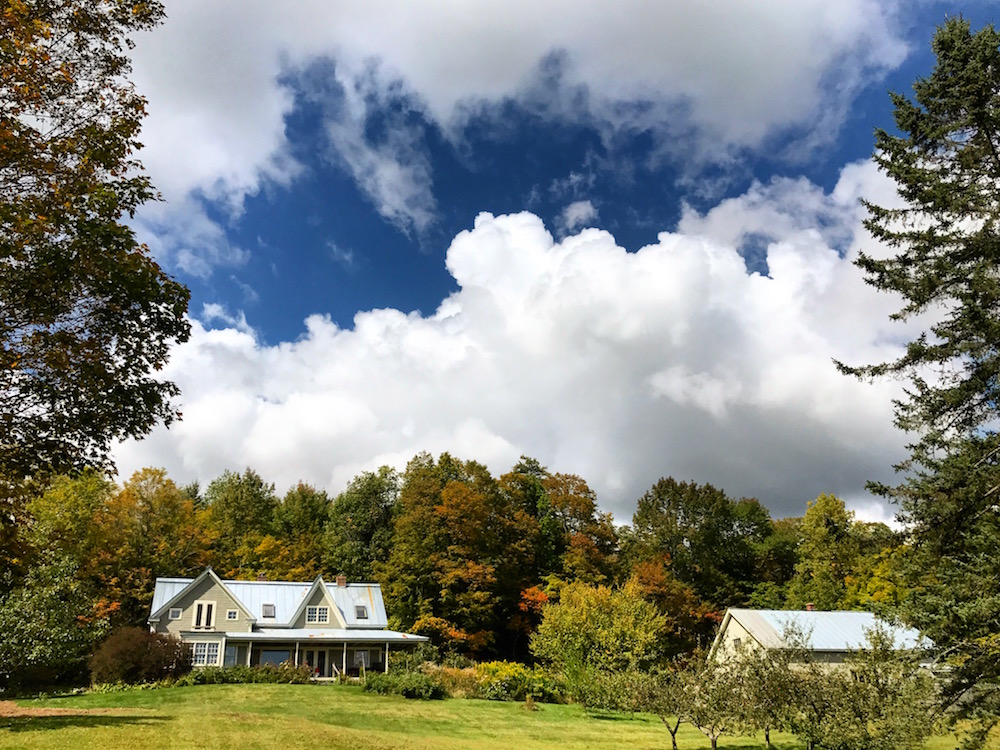
September ushered in the first wisps of fall. Most days were warm and balmy, heated by the memories of summer, but every now and then, a crisp wind blew through serving as a reminder and a portend of the season we’re sliding into.
Leaves began to turn, changing from effervescent, monochromatic green to the more exciting hues of autumn: vermillion, saffron, amber, and gold. Or, you know, red, orange, and yellow. This month served to bump up our winter preparations to do list. We remember how snow came in mid-October last year and we know these sunny, warm days are fleeting. They’re ephemeral glimpses of the past, not predictions of the future.
Gardens (Not Yet Grey!)
Our vegetable garden continued its prolific production with fountains of kale, chard, green beans, hot peppers, tomatoes, and cucumbers. We feasted (and continue to feast) on kale, chard, and green bean stir fry every single night. I estimate we’ve been eating this concoction for dinner every night since mid-July. We love the ability to eat hyper-locally and super-seasonally and it’s rewarding to harvest our own food from our own yard. Not to mention thrifty! Plus, Mr. Frugalwoods is so inventive in the kitchen that we’ve had a variety of flavor combos in this stir fry–everything from spicy Asian-inspired to spicy Indian-inspired (can you tell we like spice?!).

Labors in the garden itself–aside from harvesting–have tapered off and the plants are largely on autopilot at this point. The veggies themselves are large enough that they’re outpacing the weeds, so we’re no longer weeding. And their roots are deep enough to survive on rain water alone. Hence, our minimal watering regimen has also come to an end. September’s warmth allowed our garden to continue growing on into early October and so we’ll have to see just how many more weeks of veggies we can reap.
Babywoods 1 and I finished off the blackberry picking season this month with several gallons of berries stored safely in the freezer (and away from toddler mouths… ) for wintertime consumption.
If you’re hankering for a full rundown of every single piece of food produced on our land this year, check out last month’s This Month On The Homestead: Vegetables, Fruits, And Nuts!
Caught On Camera
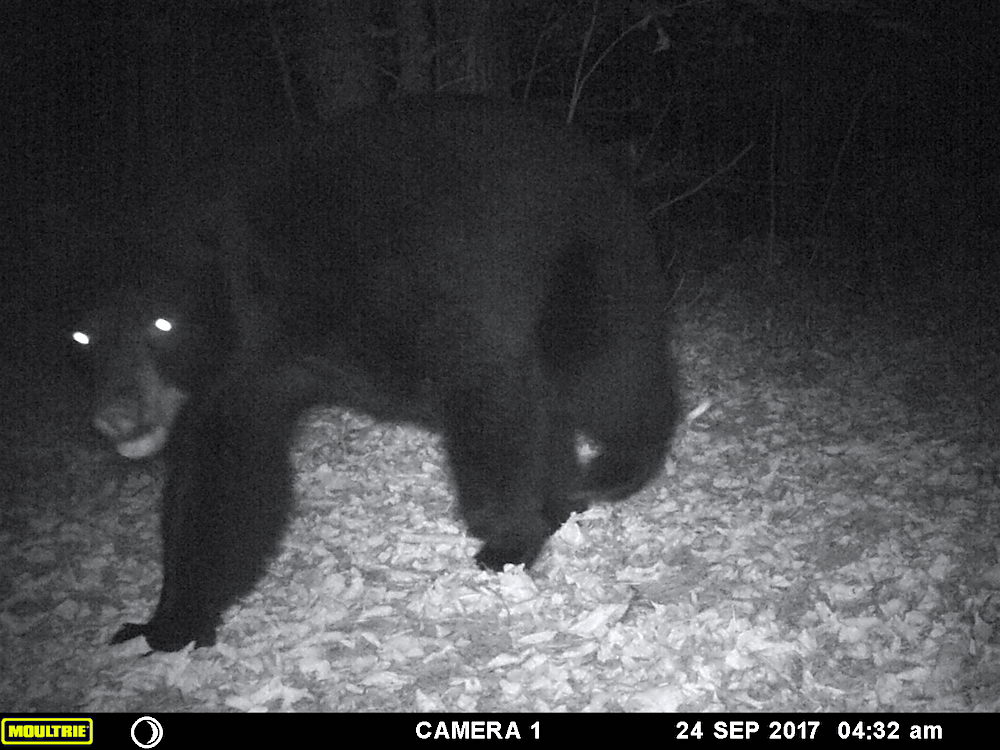
Longtime readers may recall my exuberant/fanatical joy last year at documenting each and every wild animal (pronounced “wall ahmoh” by Babywoods 1) that happened to stroll past our wildlife camera. This year I haven’t had any thrilling critter shots to spam you with share with you until this month! See photo at right!
This adorable (and rather large) black bear sauntered past our handy camera this month and wins the award for cuddliest creature in recent photo memory (to be fair, just about everything else walking past has been a wild turkey, which, being honest here, is not the cuddliest-looking of animals).
Preparing For Winter Warmth
I promised in this month’s Expenditures post that I’d share all the dirty details on our heat sources for the winter and I am true to my word. I will deliver! I’m sure you’re relieved.
Our primary heat source for our home is our amazingly energy-efficient wood stove. It’s a modern catalytic soapstone stove, which means it has nearly no emissions, is environmentally-friendly, and is able to heat our entire home. It actually burns the smoke it creates, which means that–when it’s burning correctly–nothing even comes out of our chimney! As inveterate nerds, we’ve gone outside to check this many, many times. Incredible. If you’d like to know EVEN MORE about our specific model of stove (which is made locally by craftspeople in New Hampshire), check out my detailed overview in This Month On The Homestead: From Leaves to Snow.
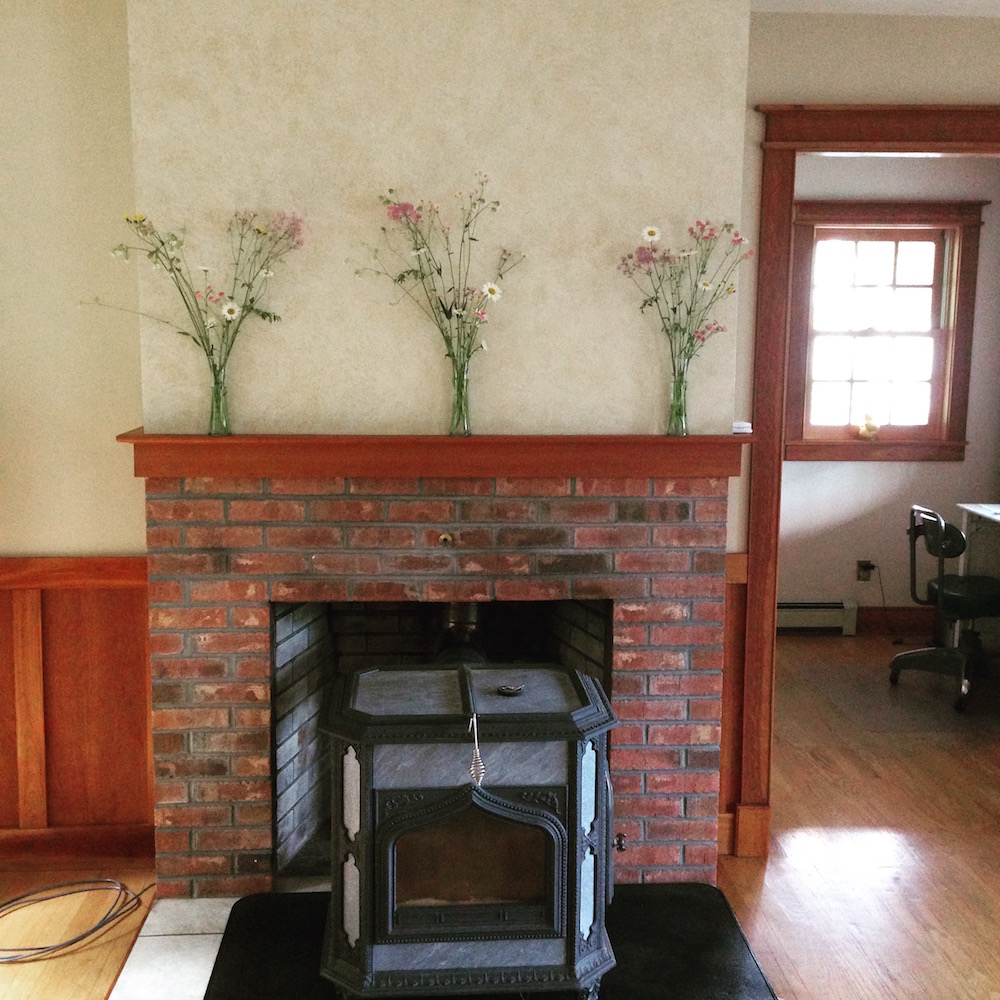
The wood stove, true to its name, burns wood and so Mr. Frugalwoods, our chainsaw-wielder-in-chief, harvests wood from our land in a multi-part process. He first identifies a tree in the forest that’s ripe for cutting, then fells the tree, bucks the log (which means cutting the log into sections), takes the bucked rounds to his wood splitting station, splits the logs, and then stacks the wood to dry or “season.”
Removing trees from our heavily forested land is an important element of managing a healthy forest as it allows new growth and supports the life cycle of the forest. This is a woefully cursory, not-at-all-thorough description of felling trees, and if you’re interested in a more in-depth treatment of the topic, check this out: This Month On The Homestead: Flowers, Wood, and Gender Roles. The fact that we’re able to harvest wood from our land to heat our home all winter long makes our stove doubly efficient and frugal. We also have a chimney sweep come out to inspect and clean the stove annually to ensure tip top performance.
Going into our second winter on the homestead, we have the fabulous benefit of knowing roughly how much wood we need to see us through the winter. We flew blind last year but, thanks to Mr. FW’s obsessive researching of our stove and the square footage of our home, he guessed our need correctly. Last winter we burned 3.5 cords of wood to heat our entire house for the entire winter. Now that’s an efficient wood stove! For those of you new to the “cord” nomenclature, permit me to expand. I too was recently new to cords, so I’ll share what I’ve learned.
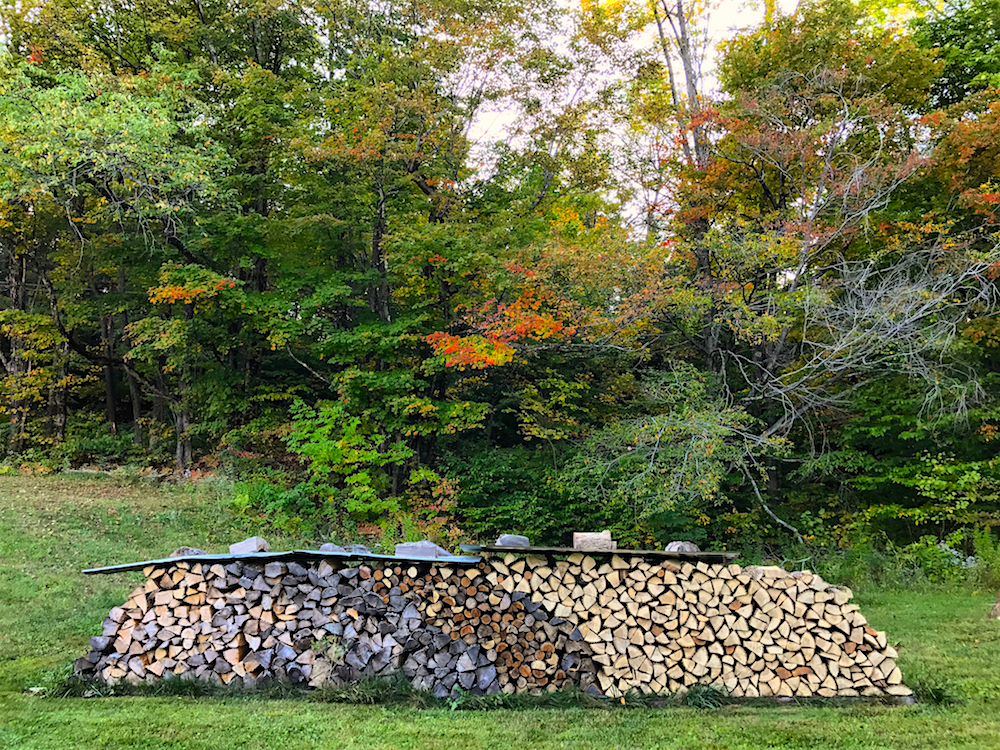
A “cord” is the unit of measure for firewood and it’s a precise measurement, not: “well I reckon that there looks like a cord of wood, hot dawg!” A cord is a stack of split wood measuring 8 feet long by 4 feet high by 4 feet wide. And if your wood stack doesn’t happen to conform to those precise measurements (such as ours), fear not, for there exists this online wood cord calculator. Who knew such a thing even existed?! Amazing discoveries daily around here. And you thought calculators were just for compound interest.
The other thing you should know about wood is that it likes to sunbathe before it’s burned. While no one will come arrest you if you burn wood that’s just been chopped (called “green” wood), it’s not the greatest of ideas for several reasons: 1) it doesn’t have as high a BTU level as dry wood and so it won’t burn as efficiently (you’ll have to use more wood to achieve the same level of heat); 2) it doesn’t burn as cleanly as dried wood, which will muck up your chimney by causing excessive build-ups of creosote, which can cause chimney fires. Le eek! So, ya know, not the greatest of ideas.
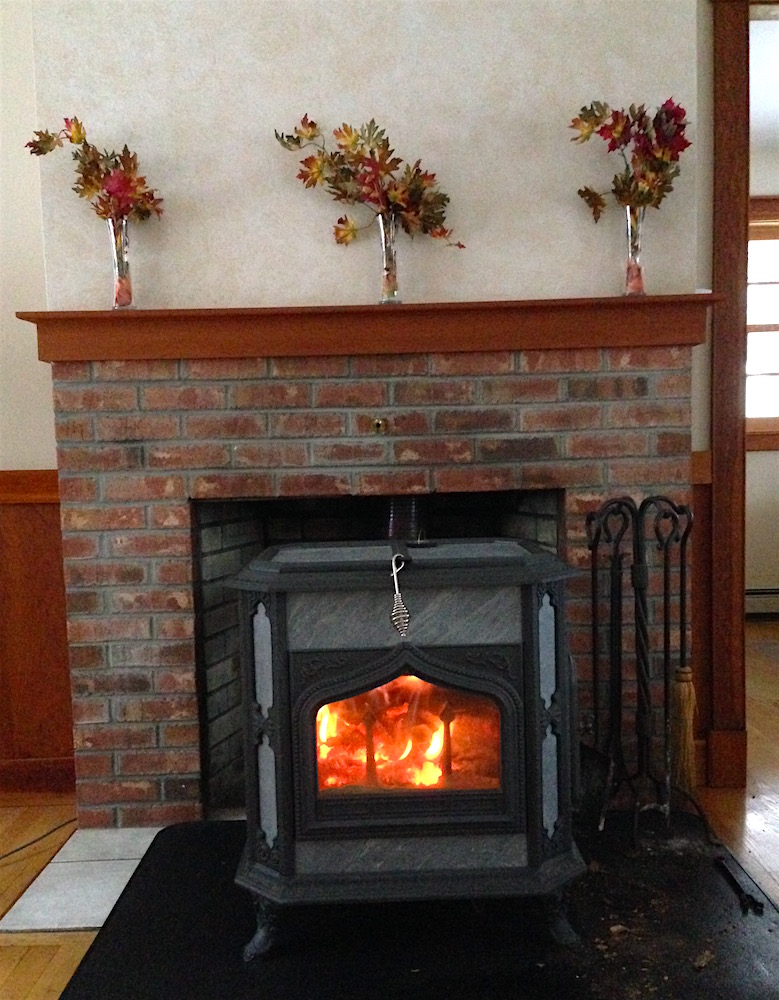
In an ideal, perfect, dream world, one’s wood would air dry out in the yard or a ventilated wood shed for nigh on two years before being burned. However, as you might’ve guessed, it’s nigh on impossible to do this when you’ve only lived in a place for a year. And so, we are engaged in a longterm, ongoing, ever-present game of wood catch-up. Thanks to Mr. FW’s industrious wood splitting last summer, we had a full cord of wood leftover that is now quite nicely dried indeed. That’ll be the first cord we burn this winter. After that cord’s finished, we’ll move onto the next-oldest block of wood.
We currently have approximately five cords of split wood, and Mr. FW is still out there splitting like mad. Our stretch goal is to have two years’ worth of wood felled, bucked, split, and stacked before the first snowfall. That’d be two more cords than we have at present moment, for a total of seven cords. If this feat can be accomplished, we will’ve leveled up in the wood catch-up game and all subsequent summers of wood splitting will be for the subsequent year, which will give us the oh-so-desirable status of burning year-long dried wood. I’ll cross-stitch* us a plaque to commemorate the moment. In order to inch us ever-closer to this goal, we made the decision to purchase a…
*Crafts?! Are you kidding me? I’ll draw one on the back of a recycled envelope.
Wood Splitter!
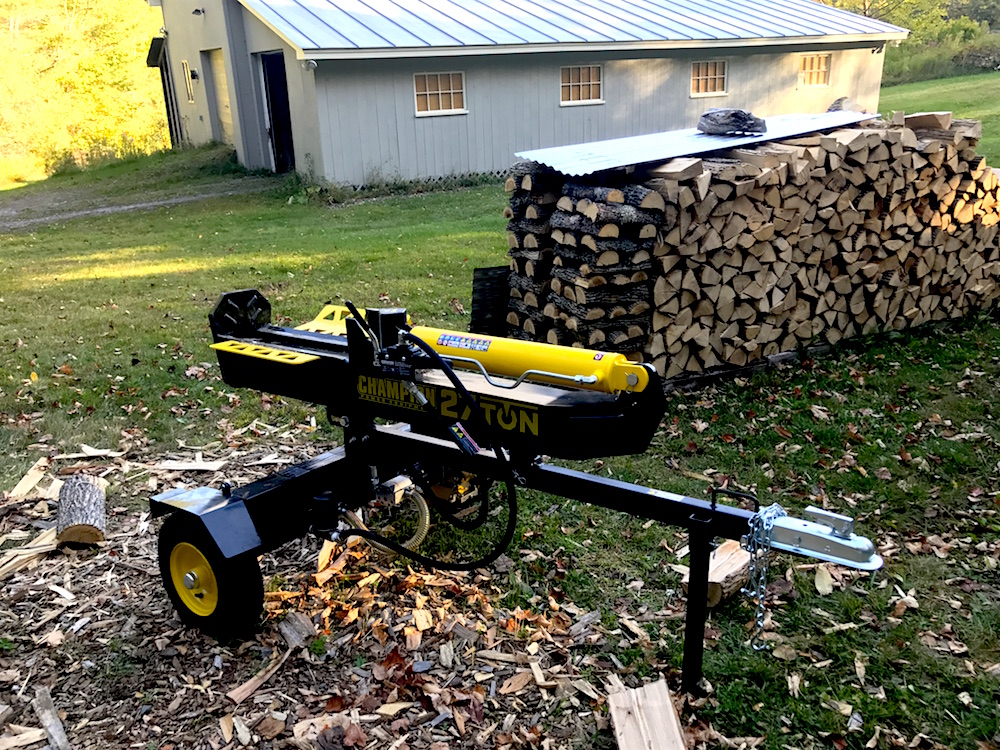
True to its name, a wood splitter is a machine that splits wood. I totally tried to come up with a more complex description but, I gotta be honest, that’s pretty much the sum total of what it does. Yep. Mr. FW and I–in classic frugal fashion–deliberated over this purchase for more than a year. He spent all of last summer, and most of this summer, splitting wood by hand with a maul before deciding that a wood splitter would be worthy addition to our homestead tool repertoire.
We also spent all year scanning Craigslist and garage sales for a used wood splitter, which much like our other recent homestead tool searches (not to mention our search for a dehydrator and a cider press), yielded exactly zero results. The closest we got was this one time when a yard sale in the next town over advertised a wood splitter for sale and, as Mr. FW pulled up, he saw another guy carting it off with what can only be described as a look of glee on his face. So close!! And yet. Hence, as shared in my recent Expenditures post, we had to buy the dang thing new.
Our philosophy for all expensive purchases such as this splitter, which cost us precisely $999, is to follow the steps I just outlined:
- See if something we already own or a substitute will suffice. In this case, Mr. FW split wood by hand for over a year.
- Search for the item on the used market.
- Wait at least a year to see if we really do need it. Often, the desire or the pressing need will simply fade away. I can’t tell you how many things we’ve thought we desperately needed only to wait awhile and realize we’re totally fine without them. The wood splitter, however, was something that came up as a need over and over and over again.
Contrary to popular belief, the wood splitter’s primary efficiency isn’t in saving Mr. FW manual labor. He reports that lifting heavy rounds of wood onto the splitter is about as taxing as splitting them with the maul. But what it does do–it’s key, primary, and best use–is that it splits wood that’s difficult to split. Folks, some wood is simply more difficult to split than other wood. That is a solid wood-related fact. While Mr. FW can split easier-to-split wood (such as Ash) by hand pretty quickly, the tougher woods of the world (such as sugar Maple and Beech) were taking him forever to split, which became an inefficient use of his time. The splitter saves time.
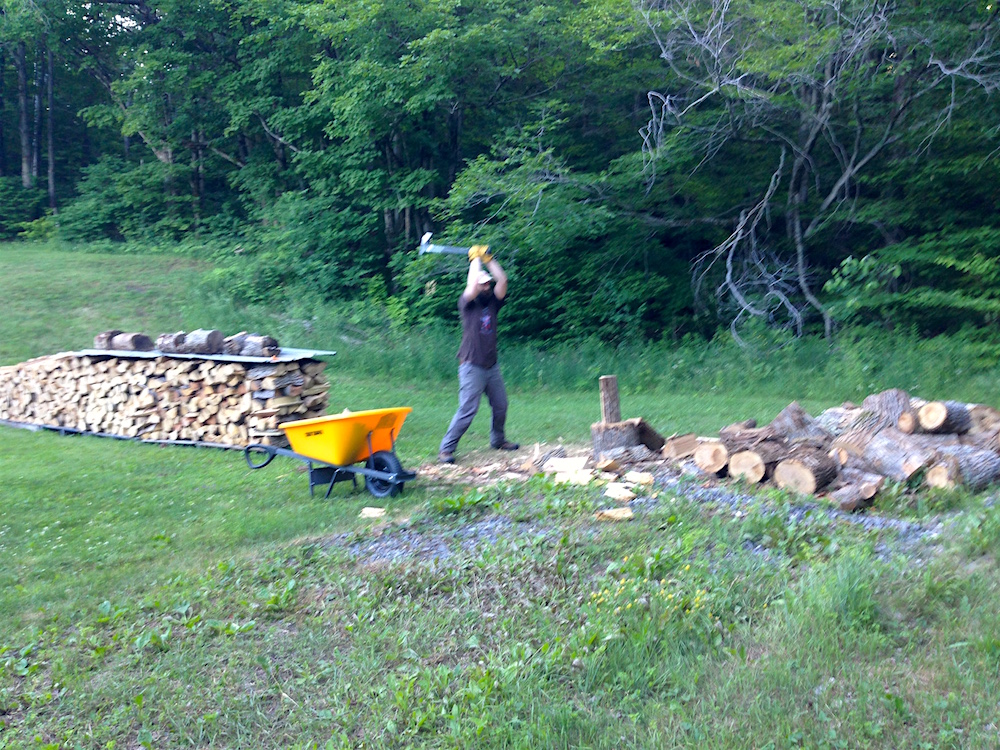
This was also becoming problematic in terms of forestry management because he was selecting easy-to-split trees to fell, which aren’t always the trees that need to come down. Trees that are dead, dying, diseased, shading out more desirable trees, or that present a danger of falling are the trees that he fells for firewood. The issue is that these trees were not always conveniently easy-to-split wood. It’s also true that different woods have different BTU levels, which indicate how hot a wood burns. The higher the BTU, the less wood you need to use. Hence, with the splitter now in hand (or on ground, as it were), Mr. FW can harvest the trees that pose a threat and need to come down with no regard for their split-ability. The splitter splits them all!
For the wood aficionados out there, we purchased a Champion 27 Ton wood splitter from Home Depot as they had the best price of all the stores in our area. This splitter also came with hydraulic oil as well as log catchers, which weren’t included in this version of splitter sold at other stores (such as Tractor Supply).
Back-up Heat!
After this exhaustive/ridiculously boring enlightening conversation about how we heat our home with wood, I’m now going to blow your minds: we also have baseboard oil heat! “WHAT, MRS. FRUGALWOODS?! You profligate home-heater, you!” This being what I imagine you saying right now. Alas, it’s true, we have back-up oil heat.

When we go out of town, or if we’re unable to feed the stove for some reason (for example if we’re having our second child…. ), we need an alternative heat source so that our pipes don’t freeze (not to mention our toes!). Having an oil boiler and a full tank of oil in our basement is our belt-and-suspenders approach to winter preparedness.
Although we heat with wood 99% of the time, it is an absolute must to have this back-up system in case of an emergency or planned absence from the homestead. Having dealt with a frozen and burst pipe in our city home-turned-rental property, I can offer the first-hand wisdom that it stinks. Don’t do it. Don’t even think about letting a pipe get so much as a frosty chill in its pipe-y bones. Heat those pipes! Who cares about our personal warmth, I am talking about pipes, people!
That being said, we got our oil tanks topped off with oil in September so that we’re ready to roll this winter. We didn’t use very much oil last year, but we like to be over-prepared for things like the cold. In addition to our oil delivery, I had our propane tanks filled as we use propane to heat our hot water and power our gas stove.
The primary reason I had oil and propane delivered this month–as opposed to earlier in the summer or later in the fall–is our driveway. Oh yes, our driveway. At a quarter mile long, covered only with dirt, and very hilly, our driveway is not to be trifled with. Not in the least. Propane and oil are both delivered by very large trucks, which very well might not make it down our driveway after it’s covered with snow and ice. I also didn’t want to schedule the deliveries during the summer for fear we’d run out of fuel (propane in particular since we don’t use any oil in the summer) before winter’s end. Hence, fall is the ideal time for us to get deliveries of oil and propane. I also wanted to talk about our oil and propane because it provides me with the perfect segue into my personal finance takeaway of the day (which I’ve never done before, but it sounded so good in the moment!)!
Never (ever) Get Just One Quote
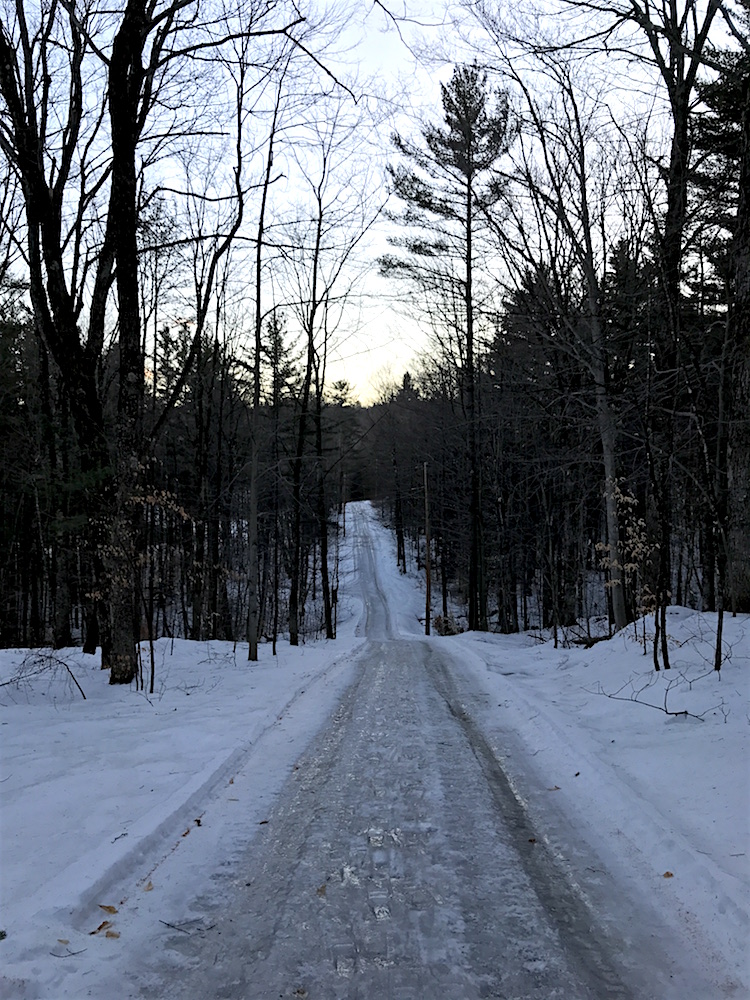
For everything we buy, we get multiple quotes and we compare prices. Always. I never go with the first item I see and I never assume that the propane company I used last year will again offer me the cheapest rate (newsflash: they did not). Since there are multiple oil and propane companies who deliver in our area, I maintain a list of all of them along with their phone numbers (a handy tool called the internet also serves this purpose).
I called every. single. one of them this month and requested their prices for oil and propane. I then created a spreadsheet and compared dollar amounts in order to find the cheapest rates for both. I ended up going with two different companies–one for oil, one for propane–neither of which were the companies we used last year. I simply bid out the amounts of oil and propane we needed and then went with the cheapest rates. In the case of our propane, two companies gave me the exact same lowest bid so I went with a local company over a national chain.
It’s a myth that you have to use the same oil or propane company every year and it’s also a myth that you’ll get they best rate by being a “loyal” customer–point in fact, the propane company we went with last year gave me one of the very highest bids this year! No thank you. Our propane tanks are above ground and so are easily swapped out. If you too have above-ground tanks, be aware that you can (and should!) call around to find the best rate. The company will swap them out for free and refund you for any propane remaining in the tanks. I’ve already received our refund check for the remaining propane, so we are done and dusted. And yes, it’s a minor hassle to call around to all of these companies, but in doing so, I saved us many hundreds of dollars. Worth it.
Since I’m sure you’re dying to see them, here are my spreadsheets detailing the oil and propane prices I was quoted by the companies that deliver to my house:
|
CHEAPEST BY PROPANE
(prices per gallon)
|
|||
| Company | Propane | Oil | Propane Total |
| Irving | $2.69 | $2.19 | $591.80 |
| Dead River | $2.69 | $2.34 | $591.80 |
| Rymes | $2.79 | $2.22 | $613.80 |
| Gillespie | $3.45 | $2.50 | $759.00 |
| Suburban | $3.99 | $2.19 | $877.80 |
| Perry | $4.95 | $2.14 | $1,089.00 |
| CHEAPEST BY OIL
(prices per gallon) |
|||
| Company | Propane | Oil | Oil Total |
| Perry | $4.95 | $2.14 | $535.00 |
| Irving | $2.69 | $2.19 | $547.50 |
| Suburban | $3.99 | $2.19 | $547.50 |
| Rymes | $2.79 | $2.22 | $555.00 |
| Dead River | $2.69 | $2.34 | $585.00 |
| Gillespie | $3.45 | $2.50 | $625.00 |
As you can see, there’s a $90 difference between the cheapest and most expensive oil companies and a whopping $497.20 difference between the cheapest and most expensive propane companies. It’s always worth calling around for several quotes on just about anything you need to purchase.
ALWAYS Ask About The Pay-In-Full Discount
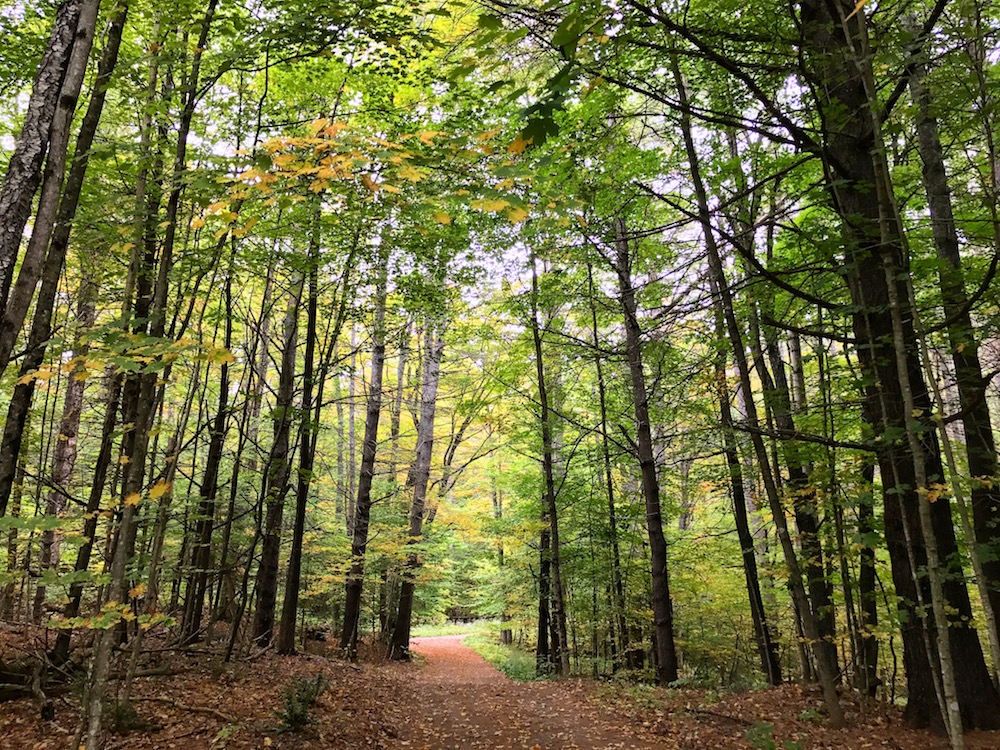
Oh hey, time for another frugal tip!!! I paid in full, in advance for both the oil and the propane because this netted me the lowest price per gallon. There’s an in full, cash, or advance payment discount available for almost EVERYTHING. Seriously, everything. I pre-paid my co-pay on Babywoods 1’s birth in order to get a discount. I got a similar discount by paying for my LASIK surgery up front and in full. Always ask if there’s a discount for paying in full and up front in any transaction.
Since many, many, many folks finance things like oil and propane deliveries, companies are often thrilled to offer you a discount for paying in full. It’s another example of how frugality is a compounding game: the more you save, the more money you have at your disposal to take advantage of opportunities like a discount for paying in full. Plus, by paying in full, we avoid the interest we would’ve been charged had we financed either our oil or propane. Frugality begets more frugality which begets a larger net worth over time.
Want More Fotos?!
While I only document homestead life once a month here on the blog, I post photos to Instagram and updates to Facebook with much greater regularity–sometimes daily! Join me there if you want more of our frugal woods.
And if you want to make sure you don’t miss a post here, sign-up for our handy dandy email list in the box below. You’ll get a message from me if you do…
Onward to October, frugal comrades!


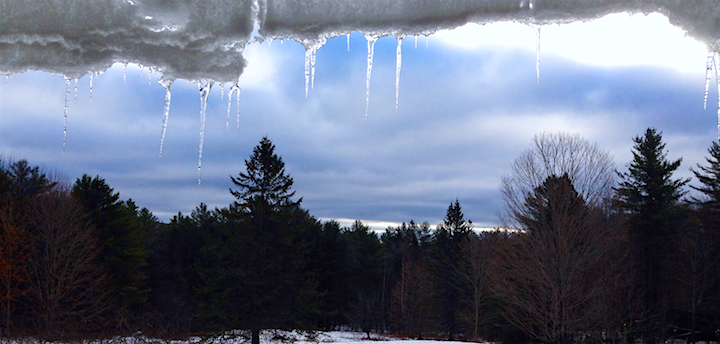
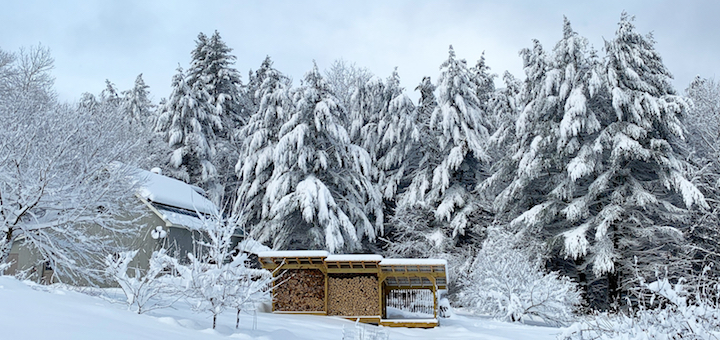
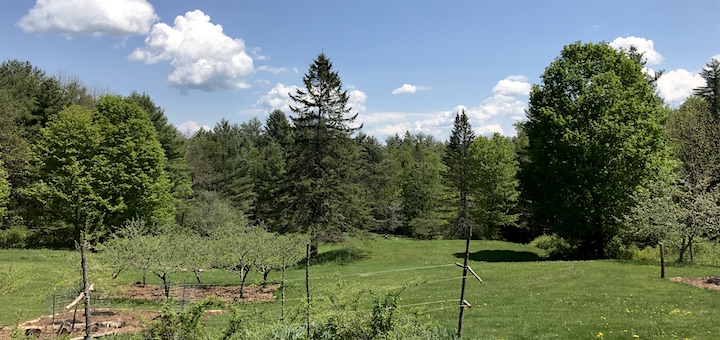
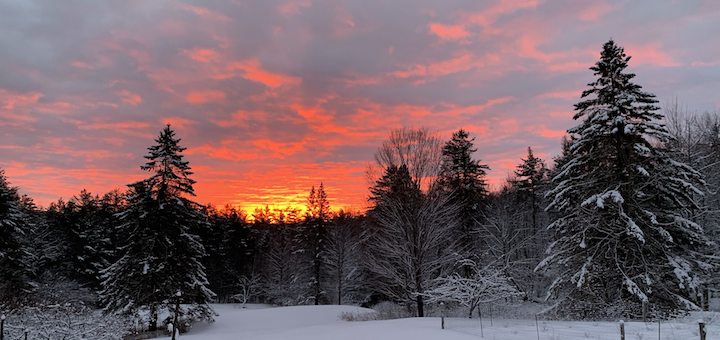
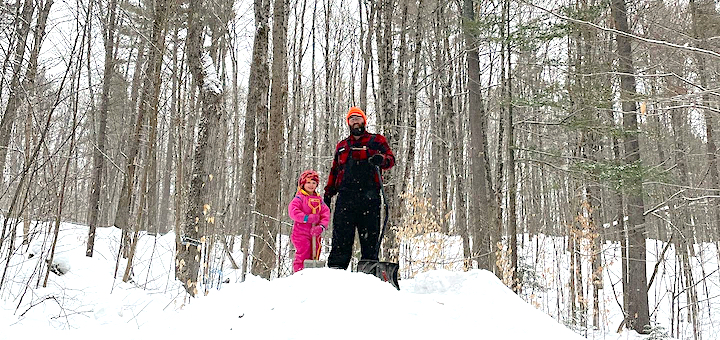

An bear! That’s so cool!
Congrats on the great improvement over last year in the garden! I love that you are willing to take it all slow. I have a tendency to rush into things and jump in fully.
I’m wrapping up my fourth year with a garden. Learning lots, and saving a bunch of money on groceries at this point. I love eating hyper local and seeing how much food I can grow in my suburban yard!
I’m all about over preparing for cold. I do not like to be cold, at all. So I’d be making sure my back up heat was prepped too. 🙂
We have used our fireplace as our heat before, and went through 2 cords in about a month….so yeah, I’d say that is super efficient. Also, dang that’s a lot of wood to cut and stack. But, all that being prepared will keep you warm no matter how cold the winter gets, for sure!
Our September was a low expense month, with none of our big house items coming up. I always enjoy the low spending, high savings months!! 😉 But that does mean we will have a few of those coming up soon…. yay… not.
Yeah, unfortunately open fireplaces don’t work too well for heat and, they give off a lot of not-so-good-for-you emissions. But they are lovely!!
This is a fascinating (and timely!) post on wood, oil, and propane! We are one year in with our new home and have a somewhat inefficient wood stove (the way it is set up, it heats one floor of our house with ease while leaving the other levels at “icicle level”… not good!). We are currently researching a potential replacement stove, but it may take a bit of a heavy lift to install one that can be a single source of heat if we choose. I’m intrigued by the catalytic soapstone stove… I’m adding it to my research list now!
Mr. Adventure Rich also just informed me of what a “cord of wood” entailed. I was previously under the impression it was the spaghetti on the wall measurement and had no idea there was a standard (and an online calculator to boot!).
I feel your pain with the 1/4 mile long driveway… we also have a 1/4 mile long rolling hill driveway. It is paved, but bordered by open fields that easily drift over with anywhere from 6″ to 24″+ of snow in a day! Deliveries became difficult on snowy or windy days and our local FedEx or UPS drivers started dropping off our packages at the end of our driveway… where I would try to retrieve them (with a sled to haul them back) before they were buried in the snow! Luckily, our propane driver managed to make it up for a refill last year, but I will be scheduling a top-off soon.
ps- Cute bear! My mom recently stumbled upon a bear in a local cherry orchard… it was so scared it ran over and climbed into a tree until she drove away!
Ha! We also have an inefficient wood stove. We’re all on one level, but it’s tucked away in a corner. Heats the living areas really well, and keeps the furnace from coming on, but our bedroom is freeeeezing!!
Haha, I’m glad we aren’t the only ones!
As soon as I commented on this post… Mr. AR came upstairs to tell me he read this post and was researching how to hook up our wood stove to our furnace system (they are right next to each other, but not connected at the moment). Talk about frugal motivation and inspiration!
An efficient wood stove makes all the difference! I think you’ll be thrilled with a newer, better stove–it’s amazing how much heat they give off. Catalytic stoves are awesome too! Hope you find one you love. And a tip on package deliveries: get a package box (can be metal or similar) for the end of your driveway to keep the snow and rain off :).
Thank you for the great idea! At one point, we tried putting a makeshift wood box at the end of our driveways, but I like the idea of a more substantial metal box.
speaking of snow drifts, could you guys install those snow fences? Might not be worth the cost for what you get out of it, but I see them when I visit my family in Wyoming all over the area.
I love fall and winter fires. Listening to the crackling of the wood while sitting by the fire is amazing. I could definitely see how a wood splinter would be something to agonize over but in the end it looks like a really great purchase.
Our September went well!!!
My wife and I are expecting a baby any day now so we have been prepping up the house and making sure that we have everything in order. So lots of last minute cleaning, clearing out of things.
On top of that our net worth increased by 3% so we’re really happy, especially with the market still rising 🙂
This post is really making me miss the cold of the North East. Its been years since we shoveled our way through a winter. We make up for a high air conditioning bill with a low heating expense in the winter. Winters are usually mild in the Atlanta area and if it snows it usually melts within a day. We will make a trip or two up north so the kids can frolic in the snow.
Wow that sounds like a lot of work at the homestead! I can’t believe fall is here, and that we have less than 3 more months until the end of 2017!
It’s nice to see the changing color of trees. It’s so pretty! We are not doing anything in particular to prepare for the winter yet. But we are planning for a trip in Dec, and I’m super excited!
It is amazing how much you guys have learned about homesteading in just over a year. I’m betting Mr. Frugalwoods has developed some crazy muscles splitting all that woods. We have an in-ground tank for our propane, owned by a propane company, so we are stuck using the same company (well, we could get a new tank installed but it’s pricey). Luckily, our neighbor negotiates a group rate for our neighborhood every year so we’re getting $2.04 per gallon this year. Since September was so warm, I’m hoping snow holds off until at least the end of the month! But you never know!! 🙂
Yeah, you’re kind of stuck with the same company with in-ground tanks. But that’s a great price your neighbor negotiated! Are you part of a fuel club? We’ve started to explore that possibility for next year. I know, we’re counting the days we get to go without starting our first fire! Such a warm fall!
That bear looks cute and cuddly, but I’d stay as far away as possible! 🙂
Long ago, I used to sell wood stoves for a living. The best stoves I sold were beautiful Vermont Castings, but your stove looks even nicer than those. Plus it’s so efficient. Nice work!
Your log splitting story reminded me of my sister’s old home. She had an A-Frame home on the Maumee River in Ohio that they heated primarily with a wood stove. My brother-in-law would go out in his boat and tow logs that had fallen into the river from state lands. Then he’d use his wood splitter to split the wood. I thought it was little strange, but pretty cool. It was definitely frugal though.
That’s some great frugality advice! We negotiated our apartment rent when we FIREd and downsized into downtown Philly. I ended up getting the best deal by prepaying 6 months rent even after accounting for lost interest.
Congrats on the log splitter! That does make it easier to heat with wood. And the back-up heat is essential. Ours is electric, and our electric bill honestly doesn’t budge much between summer and winter, which is encouraging.. but having it is the difference between being able to leave the house for 13 hours and not. My in-laws, who live next door (original back-to-the-land hippies, they’re so great) recently put in a dual system like that, because otherwise going out for an evening meant asking a neighbor to stoke up the furnace around 8pm… not great.
Question: how well-insulated is your house? Because we’re in Quebec, just north of the border (near the Derby Line crossing and library, if you ever want to be in 2 countries at once and have a library meet-up!) And based on pictures, our houses look like theyre similarly sized… and when we heat with wood almost exclusively, we run through slightly more than 2 cords in a winter (assuming we’re there during the day). So it might be worth looking and seeing if you have any air leaks that are easily fixed before winter (or, what really helped us: a double entryway, so that -20 air isn’t swooping in every time someone opens the door…) Also things like replacing that adhesive fuzz under and around doors and windows (what’s that called again?) or plastic-ing off old and specifically leaky windows.
Oh, a question: can you put a pot on top of your woodstove? We have a Vermont Castings Encore stove, which has a flap that lifts for wood piling from the top, and in a pinch it accommodates a pot. Very, very handy when the power goes out and you still wanna have stew. 😉
So our insulation is what I would call OK-ish. Fortunately, our house is quite new for this area (built in 1992) and so the windows are similarly new-ish, but there are A LOT of windows and they’re not top of the line insulated. We are constantly re-weather-stripping doors and windows, but luckily, we don’t have any mega drafts (like we’ve had in older homes we’ve lived in). We also have storm doors, which help with drafts. Our house is also very large (by our standards) at 2,300 sq feet, which accounts for some inefficiency. We also have blown-in insulation, which helps. And yes, we can put a pot on our stove–it’s nice and flat on top :).
Very VERY jealous of how much space you have for edible gardening. Right now I have a small front yard plot, so I’m constantly deciding between ripping out something that looks like it’s almost done and planting new seeds in its place vs. letting it go on autopilot and risking losing my veggie haul. I’m going to experiment with a indoor seedling setup this winter to see if I can mitigate some of those issues.
Maybe I missed this in a previous post, but how did you decide on your camera setup? How many do you have, what brand did you use, did you install it yourselves, does the content save to anything? And have you done any other security measures? That’s one thing I’ve been thinking a lot about for my future homesteading.
We have this game camera and it works well! It doesn’t upload, so we have to go collect the chip periodically and plug it into our computer. But, since we hike past it all the time, it’s no problem for us. We just have the one camera and we just strapped it to a tree using the strap it came with. After trial and error, we learned to put it pretty low to the ground because most of the animals (with the exception of the one moose we photographed) are also pretty low to the ground! Hope this helps 🙂
Wow that bear is so cool!! I love wildlife!! We have two owls that live in our backyard and lots of deer! I could watch for wildlife all day, haha.
Have you been to Manchester, Vermont?! I am hoping to plan a fall/winter excursion somewhere in Vermont and was wondering what your recommendations were!! Just something cozy and quaint, family-friendly of course, and some things to do and see (as much as I’d love to sit in a cabin all day, the little ones won’t necessarily go for that haha)
Thanks!! Hope you have a wonderful day!!
-Sarah
Have you ever considered wrapping your pipes with tape that conducts a little electricity to keep them warm? I have heard of this but don’t know more.
Yep, you can check out this post for all the fun details on heat tape 🙂 : Extreme Frugal Insourcing: Repairing a Frozen and Burst Pipe with PEX.
We heat with wood, too. Hubby needs to get his chainsaw working, because there’s plenty of wood on our property to clear! I’m super interested in the stove you’ve mentioned, because ours is cumbersome for cleaning purposes. Our chimney sweep retired and told me I wouldn’t find anyone who would clean it properly. Good workers are hard to find these days!
I love reading your monthly homestead updates! I love spending a few weeks on a homestead although I don’t think I can live on one full time. However, I love the idea of being self-sufficient, especially when it comes to food and energy.
Do you plan on getting chickens or any other animals? Or are you planning on sticking with gardening as a food source for now? I grew up spending a lot of time on my grandma’s homestead and loved that she raised and grew most of her own food, including chickens, pigs, sheep, cows, and rabbits. As a kid, it was so much fun helping her out and learning about how and why she did certain things.
For now we’re sticking with just vegetables, but I’m sure chickens will be in our future at some point–likely when our kids are older and can take them on as a chore 🙂
I love how smart you are about getting quotes and paying in cash! We had that experience in August when we had to get a tree and stump removed. I paid in cash at once and it scored us a nice little discount. 🙂 I also had no idea about wood cords, so thanks for enlightening me. 🙂
Our October is shaping up nicely on the ol’ suburban homestead. It’s still consistently in the 90s here each day (oh, Texas), but that’s good for gardening. We started our fall seeds a few weeks back and today we have some very strong seedlings. Hopefully we’ll be able to plant them this weekend or next. I’m hoping we’ll get a ridonkulous amount of squash! 🙂
I continue to be so jealous of your lifestyle! I can’t wait until the day that I too am busy cutting and stacking firewood at a homestead. Love the great bear shot! How does frugalhound enjoy all the crazy scents of wildlife on the property?
We have yet to split our wood for this year, but we have a good amount left over from last year to get us started. We got lucky-(ish) that the power company is moving lines on our property this year. They cut down a bunch of trees, which saved us the labor. But they completely took out the tree line shielding our property from the road. 🙁
Anyway, we’ve been so busy farming, we haven’t even had time to buck up or haul the wood across our property. So a neighbor is doing that for us, trading load for load. A good trade in my mind, as we are rich in wood but poor in time at the moment.
One note about the weeds in the garden… It’s tempting to just let them slide this time of year (I know I always want to), since the veggies are doing well enough on their own. But if you spend a bit of time pulling any weeds that are going to seed (or with rhizomes that are spreading under ground), it will give you a huge boost in your weeding efforts next spring. Knock down that weed seed bank!
Now I have to go get caught up on some old posts! The start of the school year is always nuts and I lag on reading blog posts.
I did enjoy reading about your stir fry. Sounds delish. I like to cook similarly (though no garden this year…I thought about one? We just started composting again, so maybe next year. Or this winter. I do live in So Cal.) Just this week I made bean & sweet potato “burgers” (patties) and went Indian one night and random mixture of spices the next.
I miss the autumn leaves. My home town is having its annual “autumn leaf” festival this week, in fact, in Western PA.
Definitely shop around! Great job Mrs FW! Those prices from high to low are -literally- double! No where close. Would anyone pay 100% more?! Yikes.
When we came back from our holiday last winter, our neighbors came back around the same time. Barely 5 mins later they ran to our house and asked where the emergency water shut off was. Apparently a pipe froze and bursted through the time they were gone! That would have happened to us too (our homes were by the same builder) if my husband wasn’t so smart to toggle on the heat on a timer.
We have a wood stove in our basement and I would love to use it to heat our house. I was wondering how you keep your toddler away from the woodstove? Do you have a gate?
We totally have a gate! The bonus is that it keeps both the dog and the toddler a safe distance from the stove. I got the gate for free as a hand-me-down and it’s black metal, which means it doesn’t look terrible and won’t melt :). I do highly recommend a gate for families with small kids–even though our kiddo listens to us and follows directions, the stove is just too hot to risk her accidentally bumping/falling into it. That being said, we didn’t gate the stove until after she was mobile.
Please share some of those inventive stir-fry recipes! We eat stir fry at least once a week to use up leftover veggies in the fridge, but we pretty much use the same sauce each time. I’d love some ideas for variety!
Sara, i use ginger and coconut aminos a lot, and also cumin, chili powder and lime.
amen to multiple quotes! We need all of our windows replaced as they are near the end of their 20 year life span (vinyl) and most have bad balances and can’t be opened properly so time to go (not worth fixing either because we don’t have time to fix so we’d have to pay someone which means full replacement is cheaper since it also brings better efficiency). I got 4 quotes which was kind of a pain in the ass because they have to come over, do their spiel, measure each window (14 in our small twin), and then give you a total. Three were nationally affiliated, one was local but came from a referral. The local guy came in 35% less than the 3 national people, so we definitely went with him.
HOWEVER– as with any big home project, DO NOT PAY IN FULL ahead of time if it’s a lengthy process. Yes, paying in full when they deliver your fuel is a great idea as you got the fuel delivered and there’s no follow-up needed, but never do any big home improvement project with any company that demands all of the payment upfront. You are setting yourself up to be robbed essentially by doing so, even with an established contractor. Who knows, your contractor could’ve developed a nasty drug/gambling habit, so just because someone came as well-reviewed doesn’t mean they won’t take your money and run. Draw up a contract, pay a deposit, and then pay in full when the job is done. That way, if they run away with the money, it was only 20% as opposed to the full 100%.
I started graduate school! Yay! With a Referential Statistics Class! BOO!
No, seriously, garden is finishing output. Had three trees felled and they left the wood ( I was okay with that). So I’ve been busting up the wood and giving it away. I have to repair the fence I had to take down so the trees wouldn’t squash it. That’s 75% back up. But I can attest to the maple and beech hardiness. The wood is not fun to bust up with a chainsaw and an ax. Sealing windows and checking for chinks in the siding will be the rest of my October prep.
It’s snowing in Denver on Monday! I think that it’s a brilliant move to purchase the wood chopper-saves you some time and energy. I’m sad though, this year’s garden was a dud because I kept traveling so I wasn’t able to focus on it. Jealous of all of your kale.
These are my favorite posts of yours! Today made me especially happy to think of winter on a 94 degree day in California.
Your posts are so interesting that I look forward to checking them out – and the comments – always something to learn from the comments as well.
If you toss some clear plastic of some sort over your greens you may very well get a few more weeks of use out of the garden. If you get a freeze, wait until after they thaw (11 -12 ish) to pick them. A number of your varieties will take some cold. Next year you might want to consider starting early with purple string beans – they take a lot of cold and will come in well before your main planting.
Bears are extremely dangerous. They generally show up closer to folks in the spring and fall when they are 1) hungry from the winter hibernation and 2) trying to build up their fat layer for hibernation in the fall. They may be after your blackberries if they are all over the place. The blackberries are rated as an invasive species around here and will take over if you don’t grub them out. Don’t know if you have the same species.
Congrats on your new toys and new babywoods2. It’s a pleasure to read about your happiness in the woods.
I had to heat with propane once and it is terrible- by far most expensive. Some good alternatives if you don’t have your own wood are pellet stoves and rice coal stoves. It depends really on your location and fuel availability. I am heating with wood pellets and price is similar to cost of gas from a utility.
You mention the wild turkeys and also the garden-seeking deer. I realize the FW’s are well adapted to a largely plant based diet, but the thought of exploring your inner Katniss must cross the mind occasionally? I have no personal experience and let baby bunnies frolic/nibble unimpeded in my own pumpkin/zucchini/cantaloupe/butternut patch this summer, but reaping nature’s free and organic bounty seems right up your alley. Also, no apologies for the conventional paid backup heat sources. There are frugal weirdos and then there are crazy people and parents of babies really should not be the latter.
We are seeing the organic free range , antibiotic free deer and have plans. Hubby took one with his bow and two with his rifle, that filled our freezer last year. Blueberries filled our small freezer, so we bought a second and I hope to get a deer or two, never shot one before despite multiple years of hunting, whereas retired milyary, veteran hubby is not hesitant to make a well placed shot to ensure meat goes in the freezer, he is not obsessed with antlers, and he is an awesome chef preparing delicious venison. Goes well with the herbs, fruits and vegetables we grew. Doing our best to maximize yields and minimize wastes.
Interesting post, esp education on wood. Regarding big variance on fuel costs, I always wonder about the rationale when I encounter a big range getting estimates. Is there an extra service one offers that the other doesn’t? Is there an extra step missing from the lower priced vendor? When you get quotes like these, do you ever ask the high price company why they are so much more?
Same service and same product from all of these companies–just a question of their profit margin!
We are getting the last out of the garden and picking a few apples, not many this first year as the trees needed major pruning to produce. Tomatoes still producing, making bruschetta to freeze. Hubby had to buy a second freezer as the first is filled with blueberries. Fall maintenance on the cars, truck, tractor and snowblower. Easier when it is 70 and sunny, not 30 with 18” of snow to try to catch up on. The bees. Hubby saw great gathering this year, went from one to four and now he is working on preparing them to survive. Friends lost some, several and even a couple lost all of their hives last year. Moisture was the problem. So handyman hubby is building quilt boxes, candy boards and follower boards, (dont ask me to explain it all, his project) and little insulated peaked roofs for each hive. He has a plan to prevent a major loss. He wants his bees to survive, expand the colonies and produce more honey next year. Better for our garden, fruit tree and bushes yields and I can sell the honey from home and craft fairs as well as lining up a buyer at a farmer’s market. I have about 12-15 seriously interesed customers who want to know when we producecenough to sell. The more local the better for organic honey. My husband is turning into a crazed organic gardener and he has plans for chickens and back to eden gardening., he says it is better produce, healthier, more disease resistant, no toxic chemicals and won’t kill our bees. We are only a mile out of our small town, but have room for what we need. First year was crazy, planting garlic this month and we are discussing a small green house setup for starting plants. . I love the fall season, but wish I could tack another Sring and summer after it rather than winter so soon. But I think we need the winter to recover and recharge for next year’s homestead adventures.
$500 seems like a really good reason to take the time and call around for the best quotes!
A couple winter’s ago I was refusing to turn on my baseboard heaters in the kitchen because I wasn’t spending much time there – and only relented when I realized that the inside of the fridge was warmer than the kitchen. Lesson learned! I wish we had a wood stove system, but I don’t think it’s possible in our neighbourhood. We do use the gas fireplace to heat up the living room on colder days, and it’s always nice to sit around the first after a delicious meal.
It’s always so fascinating to read these!
Very interesting post! I was wondering if you or some of your readers are like me and have a “summer fill” price for propane? I got my tank topped off in June for $1.19 a gallon. I’m not sure what the price is now, but I’m sure it’s more than that! I do have a wood furnace in my basement that provides my main heat. My propane furnace uses the same duct work, so it kicks on if the wood furnace gets low, or before I start heating with wood.
I’m sure I’m not, but I felt like the only one who knew what a cord of wood was, already. And I knew that some people would sell you a “cord” that was actually a half-cord, if you didn’t know what to look for.
Anyway, as I sit here on a humid 90 degree Florida day with a “real feel” of 100 degrees, this post is my daydreaming getaway. Ah, fall, crisp weather, gorgeous trees, a garden that hasn’t been killed by heat and humidity…. I love it all.
But not the bear. We have bears here, and they can be a real problem. Make sure you don’t leave any tempting garbage out near the house. I know some people think, “Florida — bears?” Yes, and coyotes and panthers (aka mountain lions/pumas) too. So caution is required when living in the woods, of course. We also have alligators, but I don’t think alligators are going to be a problem in Vermont, ha.
Anyway, this post gave me a few moments of pleasant, if wistful, dreaming, and I appreciate it! Carry on, brave homesteaders, and keep us all posted!
I can relate to the 90 degree weather… one day we’ll move further north.
Sweet splitting tip: Mr. FW should find a used car tire to put on top of his splitting log. It’ll catch all the split wood for him and there will be less bending down required. Major back pain reducer.
Check out the Propane Dover buying group. The are a non profit with the membership of $50 going to the local food pantry. I live in Southern VT area and am paying less than the prices you have listed. http://propanedover.com/
We use a pellet stove for heat in our 119 year old farmhouse. It can burn wood pellets or cherry pits or corn. We live in Indiana so we use corn!
We have a fuel oil furnace as back up for our pellet (corn) stove. Our oil company automatically does the summer fill at the lowest price and then tracks our use and brings more on a “keep filled” plan. We don’t have to check the tank and we pay the same price each month as we pay on a budget plan. The budget plan is reviewed each summer and the monthly bill is adjusted up or down depending on our usage last year and the oil price this year. Works great for us as we use fuel oil only when 10 degrees or colder or if we are gone overnight and the corn runs out in the pellet stove. Indiana corn…a renewable resource plus ww support our farmer neighbor!